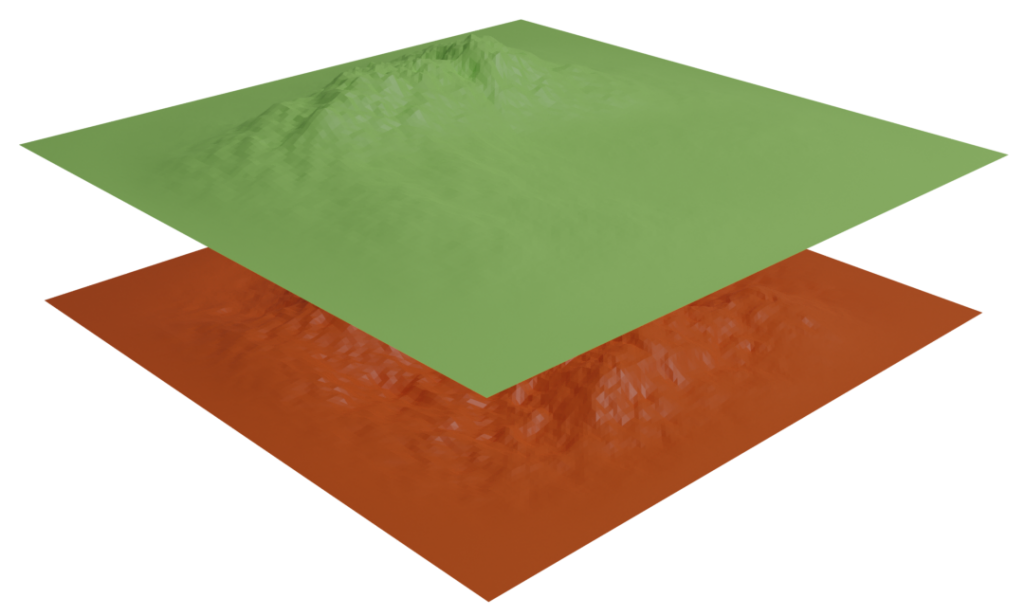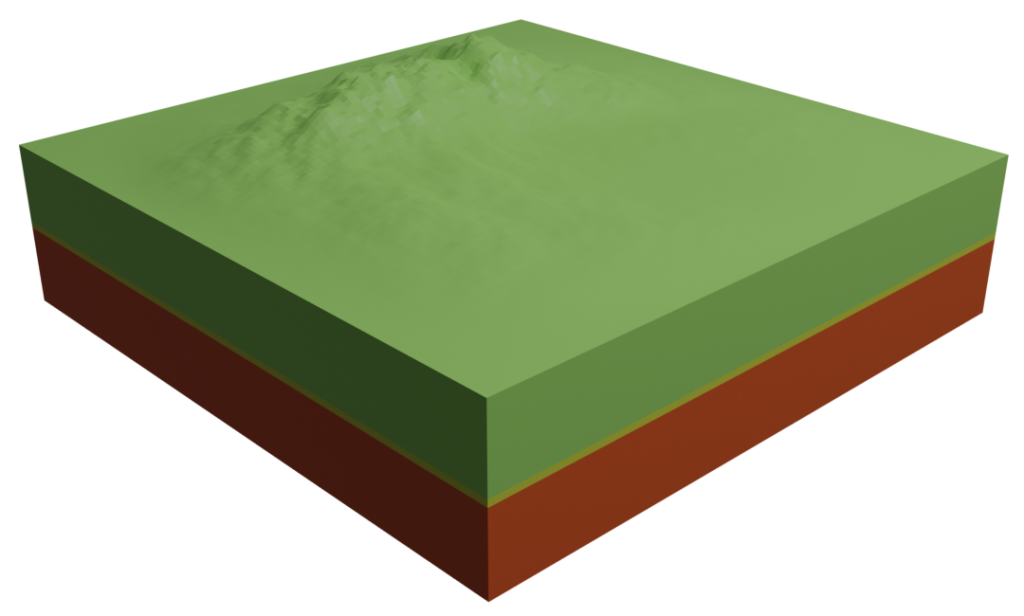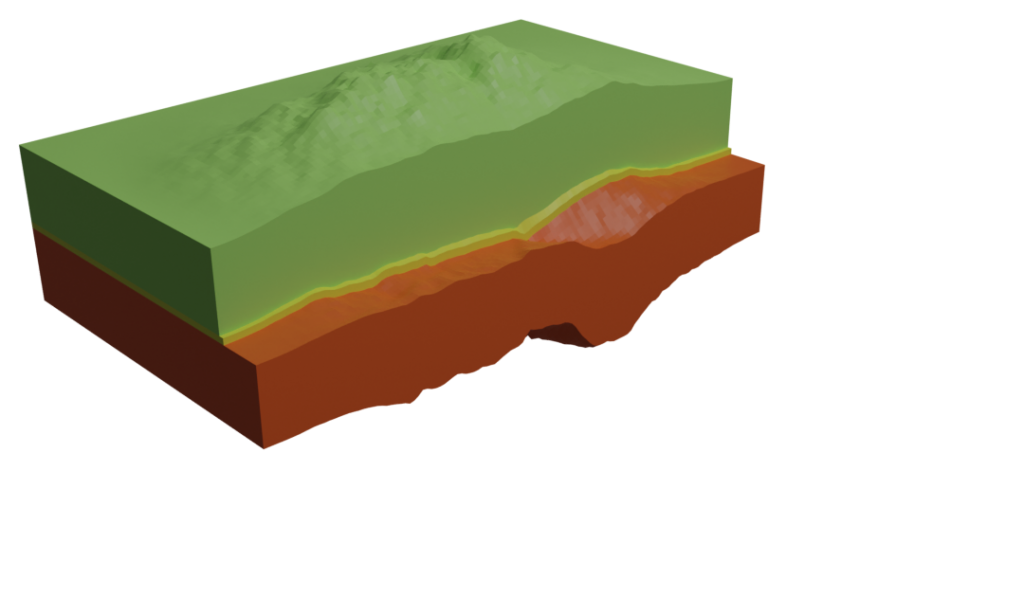Introduction
Generalized maps are highly regular data structures that encode the topological cells (vertices, edges, faces, volumes, etc.) of a geometric object. These cells correspond to subgraphs called orbits and are induced by a subset of dimensions. This subset of dimensions is the orbit type.
Thanks to Jerboa, we can write rules to design modeling operations. Therefore, these rules, enriched with orbit variables, describe modeling operations up to the topology of the orbit. In other words, Jerboa’s rules define operations up to some symmetry in the underlying object.
We exploit this regularity of both G-maps and Jerboa’s rules to produce an inference workflow resting on the graph traversal algorithm to deduce the topological part of an operation from a representative example.
Here we present an application in geology. An application to subdivision schemes can be found here.
Usage

JerboaStudio allows designing new operations by inferring them on an example. It contains a) a modeler with two viewers to manipulate the instance before and after the operation and b) an editor where the inferred operation(s) will be added. After inferring an operation, you can load it dynamically in the viewer.
Building a new operation is achieved in a series of steps, all realized in JerboaStudio:
- You need to provide two instances of an object as an example of the operation before and after its application.
- You need to select the darts of the G-maps that should be taken into account to build the operation. The selection must be done for both instances (before and after).
- You need to specify a mapping of the preserved darts. You can provide an orbit-based mapping thanks to the various association tools.
- You need to run the topological folding algorithm [1] that will compute the valid rules (up to isomorphism) based on the provided information.
You may want to add geometric computations on Jerboa’s rule before loading it in the viewer.
Executable
Here is an executable that you can use to infer operations (compiled on 01/01/2022).
Installation and Usage
Extract the zipped folder and run the jar.
Java conflicts
JerboaStudio’s viewer runs with JOGL, which is no longer supported on macOS. JOGL also seems to conflict with OpenJDK on Linux distributions and Java versions over Java 11 but runs smoothly with the JDK 11 from Oracle.
Source code
JerboaStudio’s source code is available via GitLab, with instructions to build and run the compiled executable.
Demo
Example: application to geology [2]
Geology studies the modeling of the subsoil and its geometry. The geometrical construction relies on measurements taken at different spots and knowledge of geological events. The modeling usually starts from surfaces, such as soil horizons that split the subsoil based on intrinsic properties. The question is then how to fill the volume between the surfaces. Indeed, several inter-layers might need to be added based on stratigraphic information retrieved from core samples.
We can easily specify the desired information needed to produce the complete subsoil thanks to our inference mechanism. For instance, a small layer might need to be added between two more substantial layers.

Once the rule is inferred, we manually add the missing geometry and can apply the operation to other surfaces.


